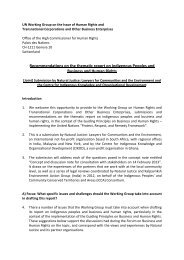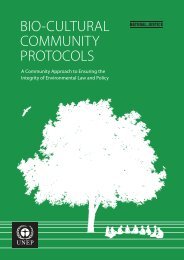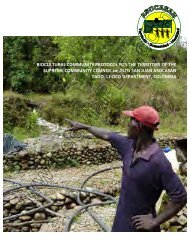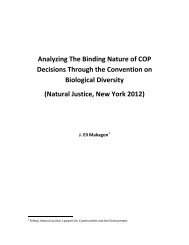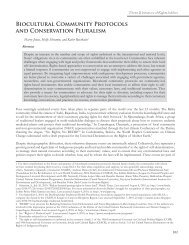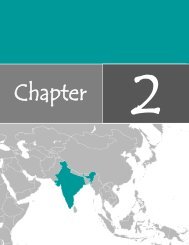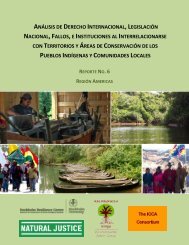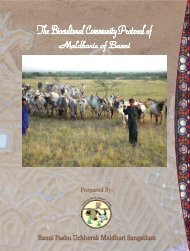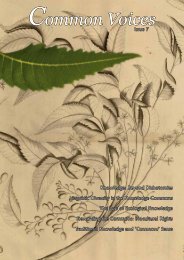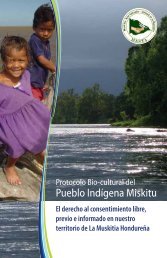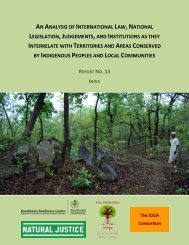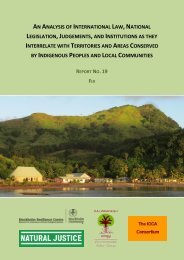English - Natural Justice
English - Natural Justice
English - Natural Justice
Create successful ePaper yourself
Turn your PDF publications into a flip-book with our unique Google optimized e-Paper software.
3. LAWS AND STATE INSTITUTIONS CONTINUETO UNDERMINE ICCAsDespite greater respect for Indigenous peoples’ and local communities’ rights andrecognition and support for their territories and areas in select legal frameworks, therecontinue to be significant gaps and weaknesses of various kinds in most countries.3.1 International Law is Exclusionary and FragmentedNotwithstanding the advances in international law noted above, the rights gains have beenachieved in many cases against determined counterforces. Indigenous peoples and localcommunities struggle to be fully involved in the meetings, as evidenced in the recentmeetings of the World Intellectual Property Organization’s Intergovernmental Committee onIntellectual Property and Genetic Resources, Traditional Knowledge and Folklore. Wherethey are involved, certain state Parties continue try to avoid fully recognizing UNDRIP andother human rights.While there is clearly a large range of rights at the international level, they remaindisconnected from one another. The International Law and Jurisprudence Report highlights a‘body of law’, but in fact, the instruments and provisions lack any cohesion or integration.This also leads to Indigenous peoples and local communities having to negotiate for hardwonrights on a particular issue within one instrument or mechanism again in other fora.3.2 The Development, Implementation andEnforcement of Laws is DiscriminatoryProcesses through which laws are developed, implemented and enforced, in addition to thesubstantive provisions themselves, discriminate structurally and consistently againstIndigenous peoples and local communities in a number of ways. First, Indigenous peoplesand local communities are seldom meaningfully involved in the drafting of legislation thatwill impact important aspects of their ways of life. Second, laws that do support the rights ofIndigenous peoples and local communities on paper can be severely undermined wherestate agencies either inadequately implement them or implement them in ways that defeatthe laws’ original intent (willfully or by neglect).Implementation GapThe Chilean Fishing and Aquaculture Law of 1991 includes a provision to establish reservesfor artisanal fishing. Its insufficiency to protect Indigenous peoples’ traditional use of coastalareas motivated the Lafkenche Mapuche to undertake a campaign for the recognition oftheir rights over those areas, which resulted in the approval of a law on “Marine and CoastalSpaces of Aboriginal Peoples” (Ley No. 20.249). This law was adopted in 2008 and formallyrecognizes Indigenous peoples’ customary uses of coastal areas, including the foreshore andseabed, not only for artisanal fishing but also for cultural practices. It has raised manyexpectations, but until now, only one such reserve has been declared.



